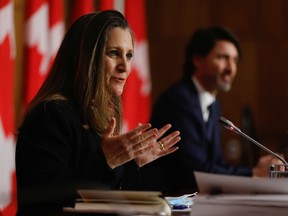Prime Minister Justin Trudeau’s fiscal road map could reduce Canada’s future spending capacity by leaving debt at elevated levels for decades, according to the nation’s budget watchdog.
The Parliamentary Budget Officer (PBO) has warned that the government’s plan would see Canada’s ratio of debt-to-gross domestic product remain higher than it was before the pandemic through 2055.
A Report Published Yesterday
Yesterday, a report was published by the PBO, which provides an independent analysis of the federal government’s finances. The report warns that the government’s spending plan could leave Canada with a high debt-to-GDP ratio for decades to come.
The Fiscal Road Map
The fiscal road map is a key component of Prime Minister Justin Trudeau’s budget plan. It outlines the government’s strategy for managing the country’s finances and ensuring that they are sustainable in the long term.
However, the PBO has warned that the fiscal road map could have significant implications for Canada’s future spending capacity. According to the report, the government’s debt-to-GDP ratio will remain higher than it was before the pandemic through 2055.
The Implications of a High Debt-to-GDP Ratio
A high debt-to-GDP ratio can have significant implications for a country’s economy. It can limit the government’s ability to implement new policies or respond to economic shocks, and it can also increase the burden on taxpayers.
In this case, the PBO has warned that the government’s fiscal road map could leave Canada with a high debt-to-GDP ratio for decades to come. This could have significant implications for the country’s economy and its ability to implement new policies or respond to economic shocks.
The Government’s Response
The government has responded to the report by saying that it is committed to managing the country’s finances sustainably and ensuring that they are sustainable in the long term.
However, the PBO has warned that the fiscal road map could have significant implications for Canada’s future spending capacity. According to the report, the government’s debt-to-GDP ratio will remain higher than it was before the pandemic through 2055.
The Experts’ Take
Several experts have weighed in on the report and its implications for Canada’s economy.
Mark Carney, former Governor of the Bank of England, has said that the fiscal road map is a "hybrid" plan that prioritizes both social spending and economic growth. However, he has also warned that the plan does not go far enough in terms of focusing on growth.
David Dodge, former Governor of the Bank of Canada, has criticized the lack of growth-focused initiatives in the budget. He has said that only $25 billion of the more than $100 billion earmarked for new spending increases public and private investments.
The Bottom Line
In conclusion, the PBO’s report warns that the government’s fiscal road map could have significant implications for Canada’s future spending capacity. The country’s debt-to-GDP ratio will remain higher than it was before the pandemic through 2055, which could limit the government’s ability to implement new policies or respond to economic shocks.
The government has responded by saying that it is committed to managing the country’s finances sustainably and ensuring that they are sustainable in the long term. However, the PBO has warned that more needs to be done to ensure that Canada’s economy is sustainable in the long term.
What Do You Think?
Do you think that the government’s fiscal road map will have significant implications for Canada’s future spending capacity? Let us know your thoughts in the comments section below.
Related Stories




